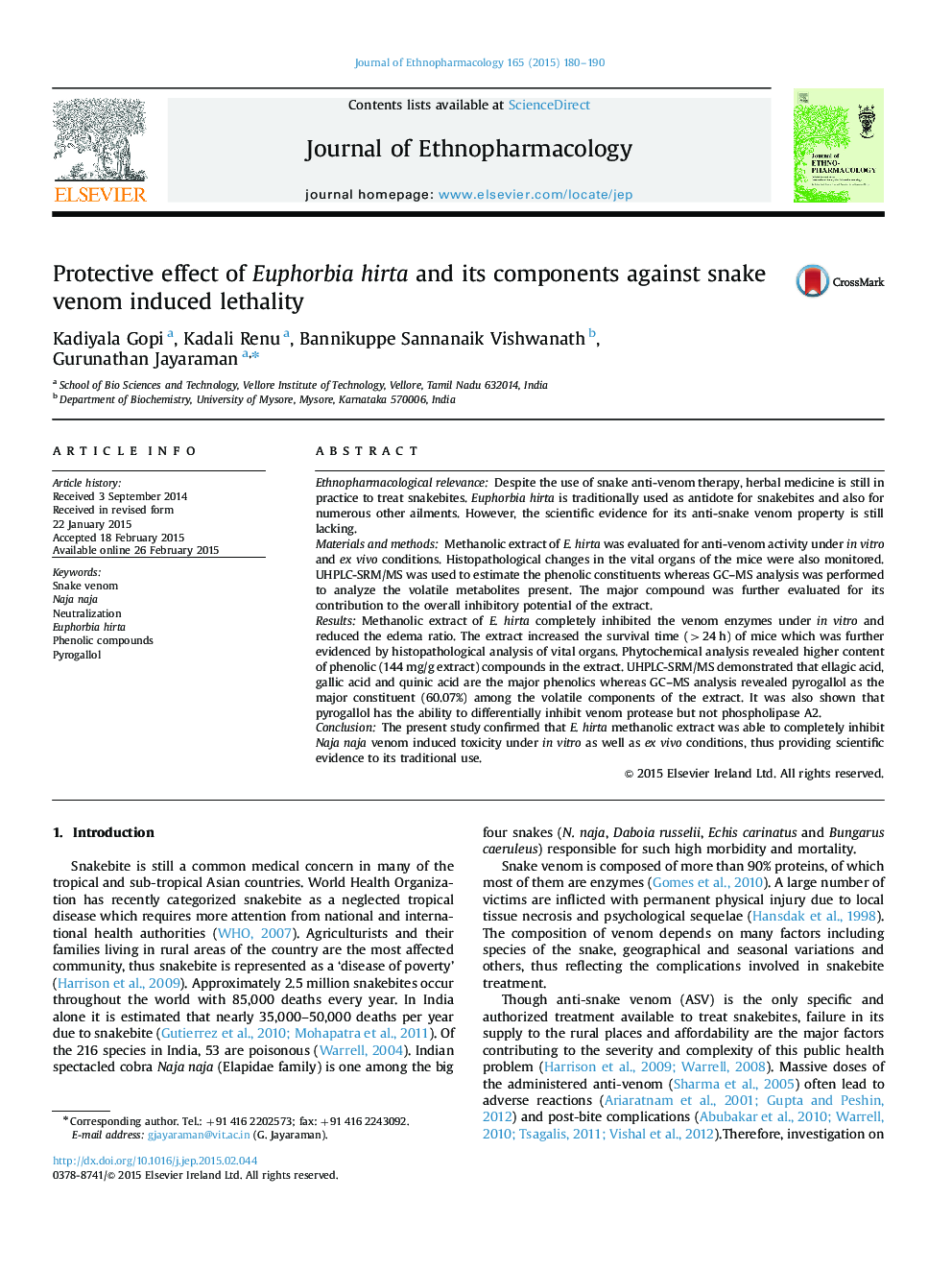| Article ID | Journal | Published Year | Pages | File Type |
|---|---|---|---|---|
| 2545068 | Journal of Ethnopharmacology | 2015 | 11 Pages |
Ethnopharmacological relevanceDespite the use of snake anti-venom therapy, herbal medicine is still in practice to treat snakebites. Euphorbia hirta is traditionally used as antidote for snakebites and also for numerous other ailments. However, the scientific evidence for its anti-snake venom property is still lacking.Materials and methodsMethanolic extract of E. hirta was evaluated for anti-venom activity under in vitro and ex vivo conditions. Histopathological changes in the vital organs of the mice were also monitored. UHPLC-SRM/MS was used to estimate the phenolic constituents whereas GC–MS analysis was performed to analyze the volatile metabolites present. The major compound was further evaluated for its contribution to the overall inhibitory potential of the extract.ResultsMethanolic extract of E. hirta completely inhibited the venom enzymes under in vitro and reduced the edema ratio. The extract increased the survival time (>24 h) of mice which was further evidenced by histopathological analysis of vital organs. Phytochemical analysis revealed higher content of phenolic (144 mg/g extract) compounds in the extract. UHPLC-SRM/MS demonstrated that ellagic acid, gallic acid and quinic acid are the major phenolics whereas GC–MS analysis revealed pyrogallol as the major constituent (60.07%) among the volatile components of the extract. It was also shown that pyrogallol has the ability to differentially inhibit venom protease but not phospholipase A2.ConclusionThe present study confirmed that E. hirta methanolic extract was able to completely inhibit Naja naja venom induced toxicity under in vitro as well as ex vivo conditions, thus providing scientific evidence to its traditional use.
Graphical abstractMethanol extract of Euphorbia hirta was found to inhibit Naja naja venom induced lethality and tissue damage. Major phenolic components in the extract were quantitatively identified using UHPLC-SRM/MS besides GC–MS analysis (pyrogallol).Figure optionsDownload full-size imageDownload high-quality image (406 K)Download as PowerPoint slide
